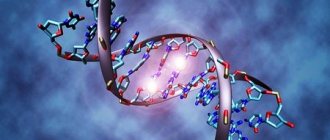Personality disorders are included as a separate disease in the International Classification of Diseases, Tenth Revision.
In the ninth revision (ICD 9) they were called psychopathy. In American literature, it was decided not to consider personality disorders as a form of mental illness. Although they are characterized by the same three main characteristics as in nosological psychiatry as for diseases. But no matter how personality disorders are named, they are always characterized by the following three main characteristics:
— totality is when a pathologically acute character trait dominates others and manifests itself in all situations, including those where one should react in a different way;
- stability is when these pathological character traits are observed from childhood and throughout the rest of life;
- the degree of expression of a pathological character trait is such that it leads to maladaptation, when a person has difficulty or cannot be socially adapted at all (lead a normal lifestyle, professional activity, and also communicate with people around him).
One of the types of personality disorder, which is included in the International Classification of Diseases, Tenth Revision, under the code F60.2, is anxious personality disorder, which I will discuss in detail in this article.
With this personality disorder, there is internal tension, anticipation of negative events, the presence of gloomy premonitions, lack of a sense of security and a feeling of an inferiority complex. At the same time, such people experience an excessive desire to be liked and recognized; they have an acute, painful reaction to refusals and criticism, along with restriction of personal affections.
A person who has an anxious personality disorder is confident in his inability to communicate with others, considers himself unattractive, and is afraid of rejection, ridicule, hostility and humiliation. He has an excessive desire for social isolation, a sense of personal inferiority, an extreme sensitivity to negative assessments and criticism, and a tendency to avoid certain actions by habitually exaggerating potential dangers and risks in everyday situations.
In the scientific literature, anxious personality disorder can be called the corresponding synonyms: avoidant, avoidant.
Diagnostic indicators[ | ]
ICD-10[ | ]
This section is translated from the article Personality Disorder. (edit | history)
Diagnostic criteria from the version of the International Classification of Diseases, 10th revision ICD-10, adapted for use in Russia (general diagnostic criteria for personality disorders, which must be met in all subtypes of disorders)[3]:
Conditions that are not directly attributable to extensive brain damage or disease or other mental disorder and meet the following criteria:
- a) marked disharmony in personal attitudes and behavior, usually involving several areas of functioning, such as affectivity, excitability, impulse control, perceptual and mental processes, as well as style of relating to other people; in different cultural conditions it may be necessary to develop special criteria regarding social norms;
- b) the chronic nature of an abnormal style of behavior that arose a long time ago and is not limited to episodes of mental illness;
- c) the abnormal style of behavior is comprehensive and clearly disrupts adaptation to a wide range of personal and social situations;
- d) the above-mentioned manifestations always arise in childhood or adolescence and continue to exist into adulthood;
- e) the disorder causes significant personal distress, but this may only become apparent later in the course of time;
- f) usually, but not always, the disorder is accompanied by a significant deterioration in professional and social productivity.
— International Classification of Diseases (10th revision), adapted for use in the Russian Federation — /F60/ Specific personality disorders. Diagnostic criteria[3]
To classify a personality disorder into one of the subtypes defined in ICD-10 (for diagnosis of most subtypes), it is necessary that it meets at least three criteria defined for this type [3].
Diagnostic criteria from the official, international version of ICD-10 from the World Health Organization (general diagnostic criteria for personality disorders, which must be met in all subtypes of disorders)[4]:
- G1. An indication that an individual's characteristic and consistent patterns of internal experience and behavior as a whole deviate significantly from the culturally expected and accepted range (or "norm"). Such a deviation must manifest itself in more than one of the following areas: 1) cognitive sphere (that is, the nature of perception and interpretation of objects, people and events; the formation of attitudes and images of “” and “others”);
- 2) emotionality (range, intensity and adequacy of emotional reactions);
- 3) controlling drives and satisfying needs;
- 4) relationships with others and the manner of solving interpersonal situations.
- G2. The deviation must be complete in the sense that inflexibility, lack of adaptability, or other dysfunctional characteristics are found in a wide range of personal and social situations (that is, not limited to one “trigger” or situation).
- G3. The behavior noted in G2 indicates
personal distress or adverse effects on the social environment.- G4. There must be evidence that the deviation is stable and long-lasting, beginning in late childhood or adolescence.
- G5. The disorder cannot be explained as a manifestation or consequence of other mental disorders of adulthood, although episodic or chronic conditions from sections F0 to F7 of this classification may exist simultaneously with it or arise against its background.
- G6. Organic brain disease, trauma or brain dysfunction should be excluded as a possible cause of the deviation (if such an organic condition is identified, rubric 07 should be used).
Original text (English)
- G1. Evidence that the individual's characteristic and enduring patterns of inner experience and behavior deviate markedly as a whole from the culturally expected and accepted range (or 'norm'). Such deviation must be manifest in more than one of the following areas: (1) cognition (ie ways of perceiving and interpreting things, people and events; forming attitudes and images of self and others);
- (2) affectivity (range, intensity and appropriateness of emotional arousal and response);
- (3) control over impulses and need gratification;
- (4) relating to others and manner of handling interpersonal situations.
- G2. The deviation must manifest itself pervasively as behavior that is inflexible, maladaptive, or otherwise dysfunctional across a broad range of personal and social situations (ie not being limited to one specific 'triggering' stimulus or situation).
- G3. There is personal distress, or adverse impact on the social environment, or both, clearly attributable to the behavior referred to under G2.
- G4. There must be evidence that the deviation is stable and of long duration, having its onset in late childhood or adolescence.
- G5. The deviation cannot be explained as a manifestation or consequence of other adult mental disorders, although episodic or chronic conditions from sections F0 to F7 of this classification may co-exist, or be superimposed on it.
- G6. Organic brain disease, injury, or dysfunction must be excluded as possible cause of the deviation (if such organic causation is demonstrable, use category F07).
— International Classification of Diseases (10th revision) — /F60/ Specific personality disorders. Diagnostic criteria[4]
The international classification of diseases "ICD-10", officially used in Russia, for diagnosing anxiety personality disorder requires the presence of general diagnostic criteria for personality disorder, plus the presence of three or more of the following personality characteristics:
- a) a constant general feeling of tension and heavy forebodings;
- b) ideas about one’s social inability, personal unattractiveness and inferiority in relation to others;
- c) increased concern about criticism or rejection in social situations;
- d) reluctance to enter into relationships without guarantees of being liked;
- e) limited lifestyle due to the need for physical safety;
- f) avoidance of social or professional activities associated with significant interpersonal contacts due to fear of criticism, disapproval or rejection.
Additional signs may include hypersensitivity to rejection and criticism.
Excluded:
- social phobias (40.140.1)[5].
DSM-5[ | ]
The American Psychiatric Association's DSM-5, the official guide to diagnosing mental disorders in the United States, defines avoidant personality disorder as a persistent desire for social withdrawal, feelings of inferiority, hypersensitivity to negative evaluations, and begins in early adolescence, appears in a variety of forms, and manifests itself , in addition to the general criteria for a personality disorder, four (or more) of the following signs:
- Avoidance of professional activities that require meaningful interpersonal contact due to fear of criticism, judgment, or rejection.
- A person's reluctance to deal with people without confidence that they will like him.
- Restraining oneself from forming close relationships for fear of being shamed, ridiculed, or rejected due to low self-esteem.
- Concern about possible criticism or rejection in social situations.
- Inhibition in new social situations due to feelings of inadequacy.
- Perception of oneself as socially inept, unpleasant as a person, or “second-class” in relation to others.
- Increased reluctance to take risks or engage in new activities, as this may increase feelings of shame[6].
Differential diagnosis[ | ]
Anxious personality disorder is often confused with antisocial personality disorder (sociopathy) due to its name; clinically, the term "antisocial" means disrespect for the norms and rules of society, not social withdrawal.
Avoidance of social activities is characteristic of both individuals with anxious personality disorder and schizoid personality disorder. A schizoid is characterized by a “dull” affect and a desire to be left alone, while an anxious type wants to communicate, but feels fear and self-doubt[7]. People with anxious personality disorder fear that their identity will be rejected and devalued, so they avoid communication.
With dependent personality disorder, the clinical picture is similar, the difference is that the dependent personality type feels the fear of separation, and the anxious personality type feels the fear of establishing contact[7].
How is social anxiety disorder diagnosed?
If symptoms of social anxiety disorder are present, the doctor will begin an assessment by asking questions about your medical history and performing a physical examination. Since there are no laboratory tests to specifically diagnose social anxiety disorder, your doctor may use a variety of tests to help identify the cause of your physical symptoms.
If no physical illness is found, you may be referred to a psychiatrist or psychologist, mental health professionals specially trained to diagnose and treat mental illness. Psychiatrists and psychologists use specially designed interviews and assessment tools to determine whether a person has social anxiety disorder.
The doctor bases his diagnosis on the intensity and duration of the symptoms identified, including the presence of obvious signs of social anxiety disorder, as well as observing the patient's behavior. The doctor then determines the degree of dysfunction and offers the patient treatment options for social anxiety disorder.
Association with other mental disorders[ | ]
Researchers suggest that people with anxious personality disorder may also suffer from social anxiety by over-monitoring their own internal feelings during social interactions. However, unlike social phobes, they are also overly attentive to the reactions of the people with whom they interact. The extreme stress caused by this monitoring can cause slurred speech and taciturnity in many people with anxious personality disorder. They are so busy observing themselves and others that fluent speech becomes difficult.
Anxious personality disorder is most common among people with anxiety disorders, although the likelihood of comorbidity varies due to differences in diagnostic tools. Researchers suggest that approximately 10–50% of people with panic disorder and agoraphobia have an anxious personality disorder, as do 20–40% of people with social phobia. Some studies indicate that up to 45% of people with an anxiety disorder and up to 56% of people with obsessive-compulsive disorder have an anxious personality disorder[8]. Although not mentioned in the DSM-IV, previously theorists identified “mixed avoidant-borderline personality” (APD/BPD), which was a combination of features of borderline personality disorder and anxious personality disorder[9].
What Causes Social Anxiety Disorder?
The exact cause of social anxiety disorder is unknown. However, research suggests that biological, psychological and environmental factors may play a role in its development:
- Biological . It is believed that the occurrence of social anxiety disorder may be associated with abnormal functioning of those brain circuits that regulate emotions and are responsible for the brain. Genetic factors may also contribute to this, since in this case the occurrence of social anxiety disorder in a person is higher than in those who do not have relatives susceptible to this disease.
- Psychological . The development of social anxiety disorder may be caused by embarrassing or humiliating social experiences in the past, such as being bullied by peers or being rejected as a teenager.
- Environmental . People with social anxiety disorder may develop their fear by observing others' behavior or seeing what happened to someone else as a result of their behavior (for example, being laughed at or ridiculed). In addition, children who are constantly protected or guarded by their parents may not acquire good social skills as part of their normal development.
Reasons[ | ]
The causes of anxious personality disorder are not completely clear. A combination of social, genetic and psychological factors may influence the occurrence of the disorder. The disorder may occur due to temperamental factors that are hereditary. In particular, various anxiety diseases in childhood and adolescence may be associated with a melancholic temperament
, characterized by hereditary behavior, including such traits as shyness, fearfulness and withdrawal in new situations[10].
Many people with anxious personality disorder have painful experiences of constant rejection and criticism from parents and/or others. The desire not to break ties with rejecting parents makes such a person thirsty for relationships, but her desire gradually develops into a protective shell against constant criticism[11].
How common is social anxiety disorder?
Social anxiety disorder is the second most common type of anxiety disorder (after specific phobias) and the third most common mental disorder in the United States, after depression and alcohol dependence. An estimated 19,200,000 Americans have social anxiety disorder. The disorder most often begins during adolescence or young adulthood, but can occur at any time, including in early childhood. It is more common in women than in men.
Symptoms[ | ]
Symptoms that are not diagnostic criteria include:[12]
- excessive fear of rejection or disapproval from others;
- avoidance of interpersonal relationships;
- feelings of personal inadequacy;
- decreased self-esteem;
- distrust of others;
- self-isolation from society;
- extreme degree of shyness/timidity;
- emotional distancing in intimate relationships;
- excessive shyness;
- self-criticism about problems in relationships with others;
- hypersensitivity to criticism;
- extreme anxiety and awkwardness in social situations;
- problems in professional activity;
- feeling of loneliness;
- feeling of being “second-class” compared to others;
- chronic abuse or dependence on certain substances.
People with anxious personality disorder are overly preoccupied with their shortcomings and form relationships with others only if they are confident that they will not be rejected. Loss and rejection are so painful that these people choose to be alone rather than take risks and connect with people.[11]
Diagnosis of Anxious Personality Disorder
This disorder is included in the International Classification of Diseases (tenth revision) under the code F60.6.
In order to diagnose an anxious personality disorder, a psychiatrist must make sure that the patient who turns to him has common signs of personality disorders.
Diagnosis of an anxious personality disorder is based primarily on meeting the general criteria for a personality disorder. A diagnosis of personality disorder (psychopathy) is made when the pathological traits meet the following criteria, which are explained in detail at the beginning of this article:
- stability, when the characteristic features of a personality disorder can be traced throughout life;
- totality, when pathological traits dominate over the basic ones even in situations where a different response is required;
— the degree of expression of pathological traits is such that it leads to social maladjustment.
After this, the specific symptoms of an anxious personality disorder that are characteristic of it are assessed (at least three from the following list):
- a consistently present feeling of tension and heavy forebodings;
- belief in one’s own inability to socially interact, unattractiveness;
— excessive susceptibility to criticism at one’s expense during social interaction;
- refusal to enter into a relationship if there is no guarantee of being accepted and approved;
- limited lifestyle due to the desire for security;
- avoidance of any type of activity that requires interpersonal contact, fear of criticism or rejection.
Therapy[ | ]
Therapy may include a variety of techniques, such as social skills training, cognitive psychotherapy, gradual increase in social contacts, group therapy for practicing social skills, and, sometimes, pharmacotherapy[13].
Gaining and maintaining the patient's trust is key in therapy, as people with anxious personality disorder often begin to avoid therapy sessions if they do not trust the therapist. The primary goal for both individual therapy and group social skills training is to persuade the patient to question his exaggerated negative beliefs about himself[14].
Symptoms of Social Anxiety Disorder
Many people with social anxiety disorder feel that there is “something wrong” but do not recognize their feelings as a sign of illness. Symptoms of social anxiety disorder may include:
- Intense anxiety in social situations
- Avoidance of social situations
- Physical symptoms of anxiety, including irregular heart rate, excessive sweating, shaking, flushing, muscle tension, upset stomach, and diarrhea
- Children with social anxiety disorder may express their anxiety by crying or throwing a full-blown tantrum, where they cling so tightly to their parents that they can't get away.
Subscribe to our YouTube channel!
Notes[ | ]
- Used in the Diagnostic and Statistical Manual of Mental Disorders DSM-IV and DSM-5, English. avoidant personality disorder.
Sources
- Disease ontology database (English) - 2020.
- Monarch Disease Ontology release 2018-06-29sonu - 2018-06-29 - 2018.
- ↑ 1 2 3 World Health Organization.
F6 Personality and behavior disorders in adulthood [F60—F69] // International Classification of Diseases (10th revision). Class V: Mental and behavioral disorders (F00-F99) (adapted for use in the Russian Federation). - Rostov-on-Don: Phoenix, 1999. - P. 245-246. — ISBN 5-86727-005-8. - ↑ 1 2 World Health Organization.
The ICD-10 Classification of Mental and Behavioral Disorders. Diagnostic criteria for research. — Jeneva. — P. 149-150. — 263 p. (English) - World Health Organization.
F6 Personality and behavior disorders in adulthood // F60.6x Anxious (avoidant, avoidant) personality disorder // International Classification of Diseases (10th revision). Class V: Mental and behavioral disorders (F00-F99) (adapted for use in the Russian Federation). - Rostov-on-Don: “Phoenix”, 1999. - P. 251-252. — ISBN 5-86727-005-8. - American Psychiatric Association.
Diagnostic and Statistical Manual of Mental Disorders, Fifth Edition (DSM-5). - Arlington, VA: American Psychiatric Publishing, 2013. - P. 672-673. — 992 p. — ISBN 978-0-89042-554-1. — ISBN 978-0-89042-555-8. — ISBN 0-89042-554-X. - ↑ 1 2 Yu. V. Popov, V. D. Vid.
Modern clinical psychiatry. - M.: Expert Bureau-M, 1997. - P. 303-306. — 496 p. — ISBN 5-86065-32-9 (erroneous). - Van Velzen, CJM
Social phobia and personality disorders: Comorbidity and treatment issues. - Groningen: University Library Groningen, 2002. - Kantor, M.
Avoidant personality disorder // Distancing: A guide to avoidance and avoidant personality disorder. — revised and expanded edition. - Westport, Connecticut: Praeger Publishers, 2003. - 296 p. — ISBN 978-0275978297. - Suzanne M. Sutherland, MD
Avoidant Personality Disorder Causes, Frequency, Siblings and Mortality - Morbidity
(undefined)
.
Avoidant Personality Disorder
. Armenian Medical Network (2006). Retrieved February 26, 2007. Archived March 16, 2012. - ↑ 1 2 Gary Gilles MA, Paula Ford-Martin MA
Avoidant personality disorder
(unspecified)
.
Avoidant personality disorder
. Healthline Networks (2003). Retrieved February 26, 2006. Archived March 16, 2012. - Marilyn Gaudette.
Avoidant personality disorder
(undefined)
(inaccessible link).
Avoidant personality disorder
. Gordon College - Barnesville, GA (2003). Retrieved February 26, 2006. Archived February 23, 2005. - Comer, RJ
Avoidant personality disorder // Fundamentals of abnormal psychology. — 4th ed. - New York: Worth Publishers, 2004. - 497 p. — ISBN 978-0716786252. - Eckleberry, Sharon C.
"Dual Diagnosis and the Avoidant Personality Disorder"
(unspecified)
(unavailable link).
"The Dual Diagnosis Pages: From Our Desk"
(March 25, 2000). Retrieved February 6, 2007. Archived December 16, 2006.
SOCIAL STRESS DISORDERS
Prof. Yu.A. Alexandrovsky. State Scientific Center for Social and Forensic Psychology named after. V.P. Serbian Ministry of Health and Medical Industry of the Russian Federation
P
The assumption of the presence of a group of so-called social stress disorders (SSD) was made in 1991 based on an analysis of the state of mental health of the population of Russia and the republics of the former USSR during the restructuring of society that began in the late 80s. SSR is developed under the influence of a socio-economic and political situation that is psychogenic and relevant for a large number of people [1, 2, 7]. Over the following years, employees of the State Scientific Center for Specialized SP. V.P. Serbsky has accumulated experience in providing assistance to persons in a state of mental maladaptation that arose in the context of fundamental social changes in post-socialist society, and to patients with neurotic and somatic disorders; Using the criteria and terminological clarifications of the classification of mental and behavioral disorders provided by ICD-10, it is possible to give a more detailed description of SSR. The socio-psychological situation that has developed in Russia in the post-socialist period has led to a breakdown in the social consciousness and life orientation of tens of millions of people. The states of psycho-emotional overstrain and mental maladjustment that develop as a result among the mass of people are essentially a collective trauma, a natural “experimental model” of the SSR.1) Similar “models” can be observed when analyzing the mental health of the population of different countries during critical historical periods. Indications of this can be found in a number of publications starting from the second half of the 19th century. In particular, the famous Russian psychiatrist F.E. Rybakov [4] in a report at a meeting of the Moscow Society of Neuropathologists and Psychiatrists based on a specially conducted study on the relationship between the political events of that time (the revolution of 1905) and mental disorders. He drew attention to the fact that pogroms, strikes, forced participation in strikes, especially among persons “passively participating in the political movement,” cause anxiety, fear, “depression in action,” acute delirium and other disorders. Subsequently, these individuals experience a change in character. SSRs are probably observed in a large number of residents of different countries when mass consciousness and habitual lifestyles change. The life catastrophe in these cases is somewhat extended in the time required to understand what is happening, which distinguishes the observed disorders from post-traumatic stress disorders - PTSD (ICD-10, F-4) and acute reactions to stress 2). The main social causes of the SSR in the republics of the former USSR include, firstly, the consequences of the long-term dominance of the totalitarian regime, which raised several generations of people on pseudo-democratic ideological and economic principles and led to the destruction of the spiritual, environmental and ecological basis of the organization generally accepted in developed countries in the 20th century the lives of millions of people; secondly, the resulting economic and political chaos, unemployment, aggravation of interethnic conflicts, contributing to the outbreak of local civil wars, the emergence of millions of refugees, the stratification of society, the growth of civil disobedience and crime. These reasons, and most importantly, the protracted and growing nature of their impact, have led to many small intrapersonal and interpersonal conflicts, which are based not so much on socio-moral, but rather on general socio-economic and political reasons. Rethinking life goals and the collapse of established ideals and authorities, often leading to the loss of the “meaning of life”, impoverishment that affected the main segments of the population, distrust in the promises of leadership, lack of real hopes for improving the situation - all this, according to some authors [3], contributed to development of a personal identity crisis. This crisis is determined by the rigidity of personal attitudes and behavioral stereotypes in conditions of rapidly changing social and economic relations. Although this position, from the point of view of the personality-typological and characterological stability of a person throughout life, seems controversial and requires strong evidence, it emphasizes the severity and seriousness of the current situation. The possibilities of democratization, openness, and the removal of political censorship introduced by the restructuring of society could not be quickly realized due to the unpreparedness of the majority of the population for creative activity in the new conditions, the lack of an appropriate political culture, and active opposition to the long-standing structures of totalitarian power. Individual conflicts, due to their mass nature, have created a huge and difficult to classify conglomerate of socio-psychological tension, against the background of which psychological (preclinical) and clinically developed variants of SSR are formed in many people. During group analytical work with patients, not only social, but also a certain personal disorientation was revealed, caused by the changes taking place in Russia. This is explained by the peculiarities of the existing social culture, which formed in the individual standardized ego ideals common to all, which led to the leveling of individual ideals and values. During the period of destruction of the old social system with its dogmas, the “ego-ideals” are overthrown. At the same time, “social values” and guidelines are officially destroyed, and the formation of new ones is delayed. All this gives rise to not only social, but also personal problems. Individual “ego-ideals” can probably become a support during this difficult transition period. Experience shows that many people with SRS develop certain mechanisms aimed at protecting themselves from the painful awareness of the collapse of their “ego-ideals.” Specialists of the Department of Border Psychiatry of the State Scientific Center for Specialized Social Protection named after. V.P. Serbsky discovered three main defense mechanisms. In one category of patients with SRS (usually over 35 years of age), idealization of the past life with its system of relationships prevails, which predetermines “avoidance of solving the problems of today.” Another group of respondents was characterized by a denial of any life values and guidelines. They can be described as “living one day at a time”; they “passively drift” through life, without any goals or plans. The third observed defense mechanism is a displacement, expressed in the replacement of real socio-psychological problems with an unusual interest in a magical explanation of current events (belief in astrology, fortune telling, clairvoyance, extrasensory perception, etc.). With other social stress disasters, residents of different countries and regions, of course, may have specific psychogenic factors leading to SSR, different from those characteristic of the models of “post-socialist Russia”. However, in all cases, the general characteristics of the SSR will be determined by the “invasion” of manifestations of social breakdown in the lives of a huge mass of people. At the same time, in various regions of Russia, as well as in foreign countries, the characteristics of SSR depend not only on the specific causes of stress reactions that are relevant for large groups of the population, but also on the subcultural originality that determines the typology of patterns of behavior and habits developed over centuries. Knowledge of national traditions and culture helps to anticipate and promptly prevent the “neuroticization of society” and, conversely, ignoring them can lead to unpredictable consequences. Along with global political and economic problems, a significant place in the complex of causes of SSR can be occupied by individual ones: the organization of life, the presence in governing structures of “power received not only from above, but also from subordinates,” the inability to manage, to use both individualistic and collectivist aspirations characteristic for a particular group of people, the relationship between the emotional and rational principles. Among the social factors influencing the development of the Soviet Socialist Republic, a significant place belongs to the “motivation of the nation” or one or another part of it. The Dutch researcher Hofsteed, who studied “social ethnocultural characteristics” in the second half of the 80s of our century, identified four types of motivations characteristic of different communities. The first group consisted of North Americans, Australians, British and Irish who are “motivated to achieve” [6]. For them, money plays the main role. The desire for wealth drives a person, forcing him to rationally and, as accurately as possible, calculate his steps in order to be a leader in large and small businesses. The second group includes residents of countries focused on “protective motivation”, who value stability and traditions above all, striving to create “their own little world” in which no one interferes. This group includes residents of Austria, Belgium, Italy, Greece, Japan and a number of other countries. The third group of countries is characterized by “social motivation”: Yugoslavia, Spain, Brazil, Chile, Israel, Turkey. Hofsteed also includes Russia in this same group. A feature of life in this group is an “equalizing approach”; although people are committed to improving the quality of life, they believe that “it’s best not to change anything so that it doesn’t get worse...”. Hofsteed's fourth group includes residents of Scandinavian countries, also distinguished by social motivation, but constantly aimed at improving the “quality of life” (unlike the third group). A breakdown in the “motivation of the nation,” as well as a change in moral and religious foundations, is accompanied by an increased risk of developing SSR. The diagnostic criteria for CVS, their main options, as well as the main causes, clinical manifestations and differential diagnostic signs are summarized below.
Criteria for diagnosing SSR
A. Conditions (reasons) and features of subjective experiences
- a radical change in social relations that goes beyond ordinary experience;
- a change in the system of cultural, ideological, moral, religious ideas, norms and values that remained unchanged throughout the lives of previous generations; changes in social connections and life plans;
- instability and uncertainty of life situation.
B. Features of behavior
- sharpening of personality-typological character traits;
- development of hypersthenia (up to self-destructive inappropriateness), hyposthenia, panic reactions, depressive, hysterical and other disorders;
- loss of “communication plasticity” and the ability to adapt to what is happening while maintaining perspectives in purposeful actions;
- the emergence of cynicism, a tendency to antisocial actions.
The main reasons for the emergence and development of SSR
- Macrosocial group-wide psychogenies that change the stereotype of life activity of large contingents of the population.
- Socially stressful circumstances that are chronic and extended over time, their dynamics directly determine the compensation and decompensation of neurotic disorders.
- Deterioration of somatic health.
- Increased decompensation of neurotic and pathocharacterological disorders under the influence of the “biogenic” impact of environmental hazards.
Main clinical manifestations of SSR
- autonomic dysfunctions;
- night sleep disturbances;
- asthenic disorders;
- hysterical disorders;
- panic disorders;
- other neurotic and psychopathic disorders.
All mental disorders in SRS are not specific; they are caused by general mechanisms of development of the state of mental maladjustment.
Main variants of the SSR
1. Non-pathological (psychophysiological), pre-morbid reactions. Main manifestations:
- emotional tension;
- decompensation of personal accentuations;
- autonomic dysfunctions;
- hyposthenia;
- hypersthenia;
- insomnia.
These manifestations are transitory in nature and are directly related to the reaction to socially stressful circumstances.
2. Psychogenic adaptive reactions. Neurotic disorders with predominance:
- neurasthenia;
- depression;
- hysteria;
- other disorders.
The “clinical expression” of a reaction arises under the influence of an individually significant specific circumstance, but the “readiness” for it is determined for a person by a socially changed “background”.
3. Neurotic conditions (neuroses) with a predominance of:
- depression;
- anxiety-phobic disorders;
- Senesto-hypochondriasis;
- other disorders.
Chronicity of neurotic disorders when the socially determined causes that caused them are not resolved leads to:
- to pathocharacterological development of personality;
- to psychosomatic disorders;
- to alcoholism, substance abuse, drug addiction;
- to reactions of social protest and illegal actions.
4. Acute reactions to stress. Acute affective shock reactions, manifested by:
- motor excitement;
- motor retardation;
- delusional;
- pseudodementia;
- other disorders.
Duration of SSR
- Non-pathological (psychophysiological) reactions - several days.
- Psychogenic adaptive reactions - up to 6 months.
- Neurotic and somatoform disorders - up to 3-5 years.
- Pathocharacterological development of personality - after 3-5 years of stable neurotic
disorders.
The main difference between SSR and PTSD.
SRS develop not only in people experiencing specific dangerous situations, but also in those under the influence of macrosocial group-wide psychogenic factors. In its phenomenology, SSRs are not fundamentally different from other disorders observed in normal and extreme conditions, however, they are caused by common causes and simultaneously develop in a large number of people. Their identification as a special group of neurotic disorders can contribute to the development of differentiated definitions and socio-psychological, preventive and therapeutic measures. At the same time, however, the fundamental question of including SSR in the list of diseases accompanied by a person’s incapacity for work and requiring appropriate social protection (payment of benefits, etc.) remains controversial. Probably, in the presence of certain unexpressed general neurotic manifestations in the case of SSR, we can only talk about initial states of mental maladjustment and an increased risk of developing painful conditions. The stabilization of psychopathological symptoms and the formation of clinical variants of their complexes are a strong basis for the conclusion that the pre-morbid state has transitioned into the disease itself. SSRs are a particular example of the influence of social conditions on the occurrence of psychogenic and somatoform mental disorders. In this regard, one can recall, for example, neurasthenia (“American neurosis”), described in the USA in the 20s of the 20th century, during the period of intensive development of capitalism, and the concept of acquired psychopathy developed by P.B. Gannushkin in the post-revolutionary period in Russia, the concept of post-traumatic stress disorder, which came into practice when assessing the condition of Vietnam veterans. The allocation of SSR to a special group reflects the need for practice to assess the current situation and compare changes in the socio-economic and political situation that have affected tens of millions of people in Russia with observed changes in the mental health of the population.
Abstract
Dynamic observation of changes in mental health of the Russian population during the period of post-socialistic society development formed the background for the detection of Social-Stress Disorders (SDD). The main cause of SSD development was shown to be macrosocial group psyhogenic traumatization with profound changes of living standards and patterns in society. The paper discusses the general adaptive nonpathological manifestations and clinical forms of SDD.
Literature:
1. Aleksandrovsky Yu.A. // Review of Psychiatry and Medicine. Psychology named after. V.M. Bekhtereva S. Petersburg. - 1992. N 2.-S. 3-12. 2. Aleksandrovsky Yu.A. //Current issues of military and environmental psychiatry. St. Petersburg. - 1995. - pp. 15-22. 3. Pologiy B.S. // Review of psychiatry and medical science. Psychology named after. V.M. Bekhtereva St. Petersburg. 1993. N 4.-S. 6-1 1. 4. Rybakov F.E. // Mental disorders in connection with recent political events. - M. - 1906.- Typometography. — P.22. 5. Freud 3. // Psychology of the unconscious. - M. “Enlightenment”, 1989. - P. 445.”6. Hofsteed A. // Cited. according to A.A. Naumov J. Expert, 1995. -NI 0.P.27. 7. Alexandrovsky YA //Am. Acad. ofPsych and the Law. - Vol. 17.-N 3.-P. 90-91.
1). 3. Freud, when assessing the psychology of the masses during critical periods, especially emphasizes the emphasized affectivity, suggestibility, gullibility, preference for rumors over official information, and the “contagiousness” of experiences and beliefs [5].
2) The analysis of the mental health of the Russian population after the revolutionary events of 1917 deserves special discussion. The terror that followed the change of power, the redistribution of property, the violation of democratic freedoms, famine, the world war with tens of millions of dead and hundreds of millions of wounded and injured - all this was the objective basis for development of the USSR. The lack of data on a significant increase in the number of patients with neuroses and other borderline conditions is probably explained by the corresponding ideological “adjustment” of official statistics to the idea that in a socialist society, as opposed to a capitalist one, there cannot be a large number of patients with neuroses, as well as insignificant attention to identifying and treatment of pre-disease disorders.
Literature[ | ]
- Comer, RJ
Avoidant personality disorder // Fundamentals of abnormal psychology. — 4th ed. - New York: Worth Publishers, 2004. - 497 p. — ISBN 978-0716786252. - Eckleberry, Sharon C.
Dual Diagnosis and the Avoidant Personality Disorder: [arch. 03/16/2012] // The Dual Diagnosis Pages: From Our Des. — 2000. — March 25. — Date of access: 02/06/2007. - Kantor, M.
Avoidant personality disorder // Distancing: A guide to avoidance and avoidant personality disorder. Reworked and additional ed. - Westport, Connecticut: Praeger Publishers, 2003. - 296 p. — ISBN 978-0275978297. - Rettew, DC
Avoidant Personality Disorder: Boundaries of a Diagnosis // Psychiatric Times. — 2006. — July 1. - Van Velzen, CJM
Social phobia and personality disorders: Comorbidity and treatment issues. - Groningen: University Library Groningen, 2002.








